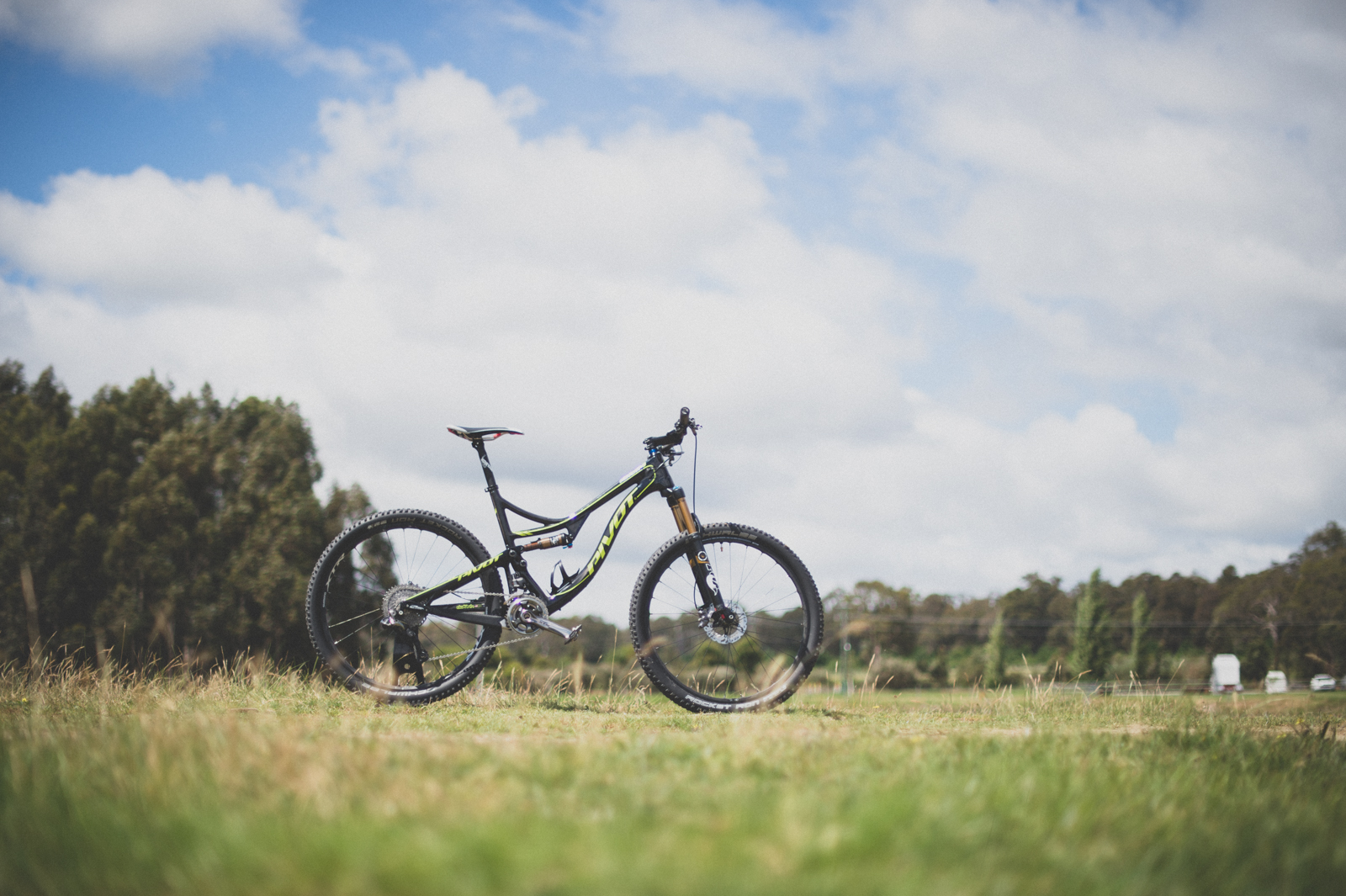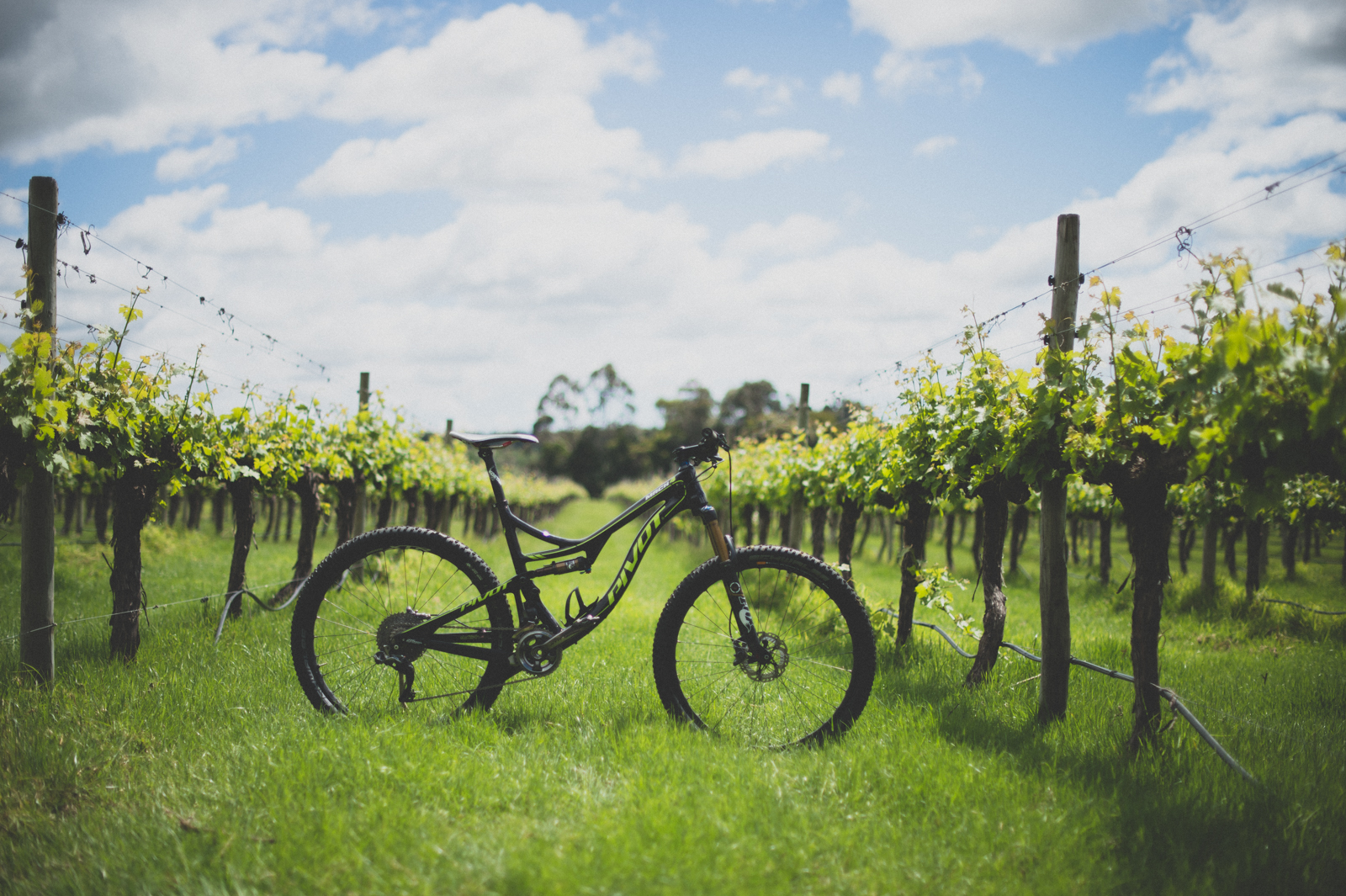Flow was invited by Shimano to the recent Cape to Cape MTB stage race in the Margaret River region of Western Australia to sample the new XTR Di2 (Digital Intelligence Integrated) technology. Over a couple of race stages, and a few classroom sessions and some tasty beers, we got a great introduction to this new world order of intelligent, electronic shifting.
The great debate begins
We humans love to debate; VB vs XXXX, Capitalism vs Communism, Apple vs Android, Justin Bieber vs Metallica – the list is endless. We mountain bikes are just the same, and we’ll fight tooth and nail over a technology that we either love or loathe. Since the advent of the 29” wheel, we can’t think of a product that will draw a line in the sand clearly as XTR Di2. And yes, we now know which side of that line we stand on.
We can’t think of a product that will draw a line in the sand clearly as XTR Di2. And yes, we now know which side of that line we stand on.
For some, the idea of electronic shifting seems unnecessary, but we see it as part of the evolution of our sport. We’re all for smart evolution and the introduction of electronic functions and intelligence into our ride experience is just part of that journey. You can close your eyes to the possibilities and stroke your beard as you ride your rigid singlespeed, or you can embrace this evolution. We’re going with the embracement, because who doesn’t love a hug, even if it’s from a robot derailleur.
Back to the classroom
Before we were able to hit the trails, we hit the books – it was off to the classroom for a little lesson on all things new on XTR and Di2.
Sitting in the mobile Shimano showroom on the grounds of the Colonial Brewery were treated to all the background and technical details of the entire new XTR range. Overtime we will introduce you to that entire range, including new brakes, hubs, and carbon/aluminium wheels, however we’re going to focus our attention with this article on the Di2. It’s the sexy part after all.
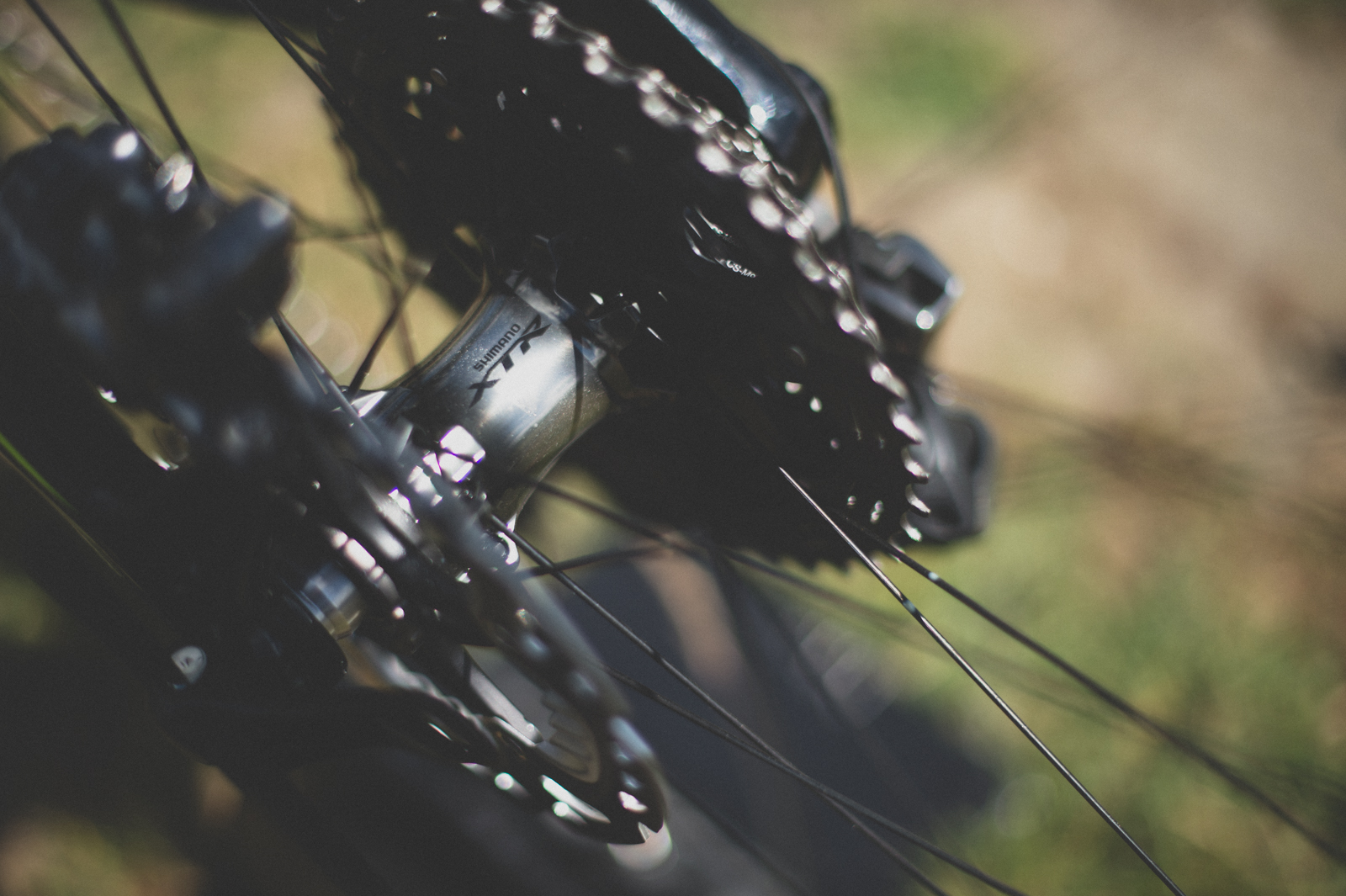
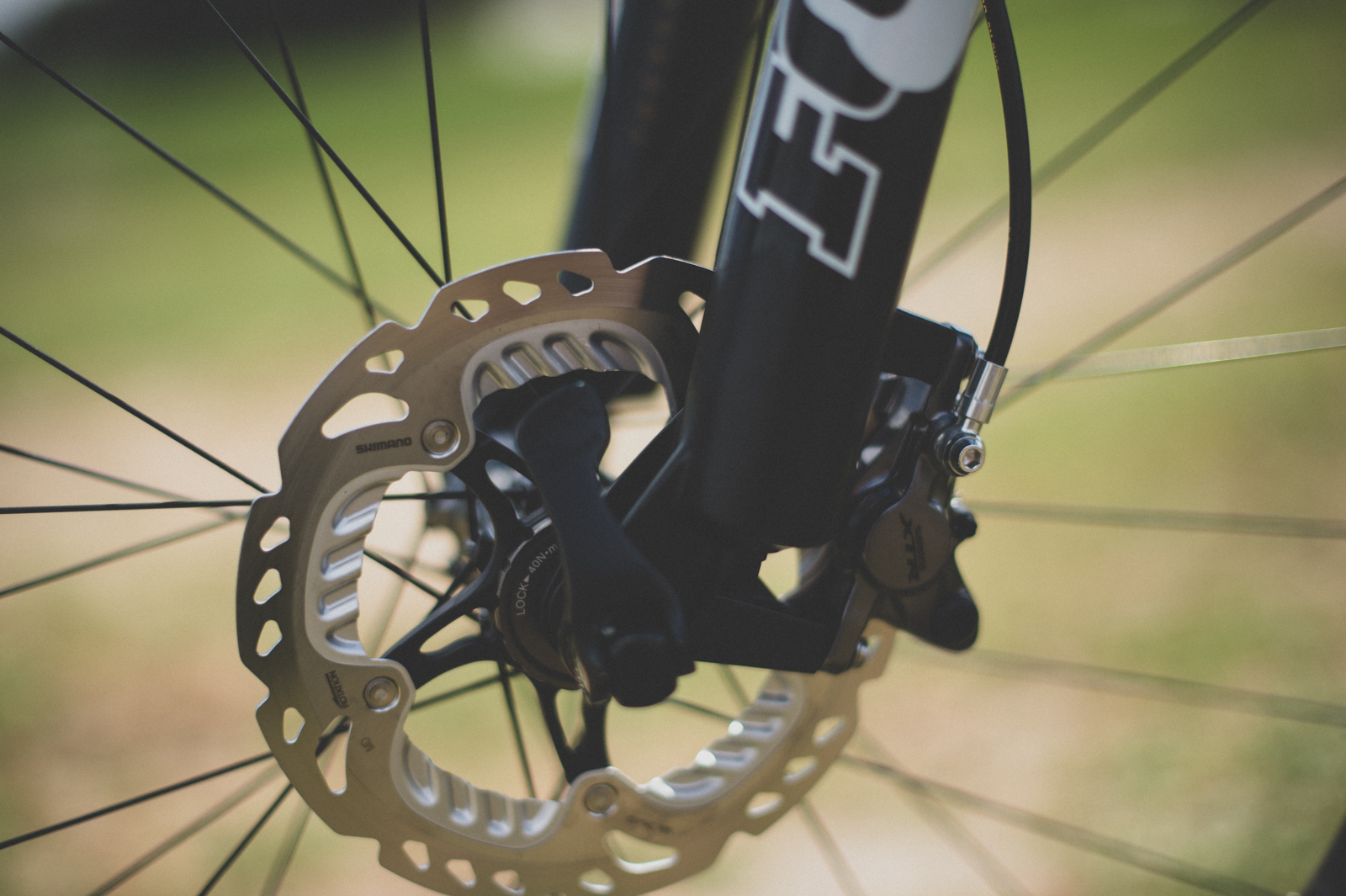
Shimano have had half a dozen years experience with electronic shifting in the road world, but they haven’t just shoe-horned roadie tech onto our bikes. XTR Di2 has been engineered for our needs, so much so we can now thumb our noses at the road crew, as our version is a more advanced product. Not only has it been designed to handle the abuses of mountain biking in a physical sense, but it has greater functionality too; most notably, the addition of Syncro Shift (more on that later), a digital display unit, plus the capability to integrate with your FOX electronic suspension lockouts.

Shimano are firm in their assertion of the benefits of a multiple chain ring setup, as opposed to a single ring. A single-ring XTR option will exist, but Shimano believe a 2x system is prime for most of the market, even at the high end. While SRAM are focused on a single ring coupled with a 10-42 tooth cassette, Shimano feel a closer ratio cassette of 11-40 teeth with multiple rings is a better arrangement and it delivers a larger overall range with a much closer ratios.

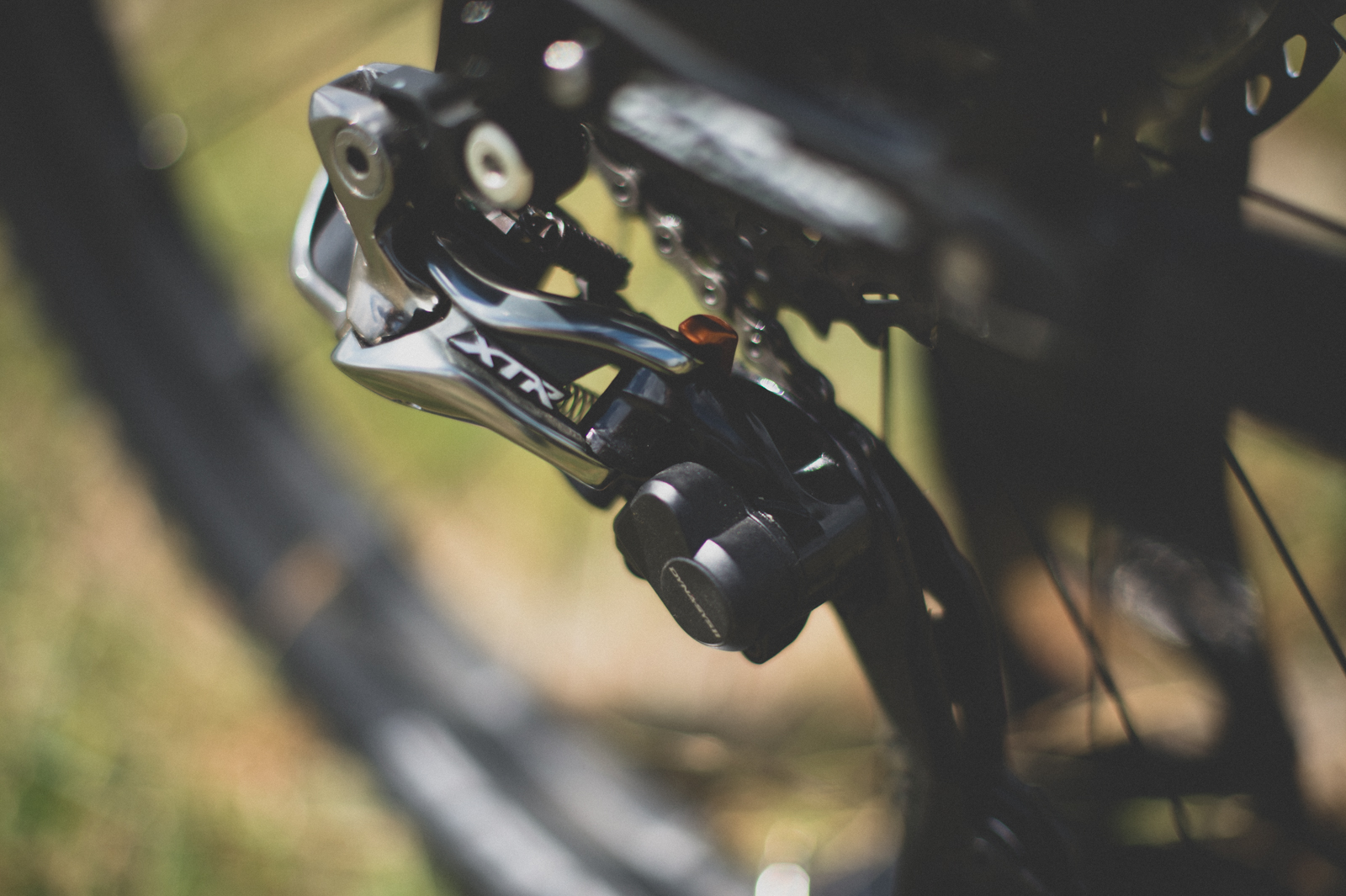
What this means in reality is a much smaller difference in leg speed and/or power change at each shifting point. Big differences in gear ratios do impact upon your cadence meaning you have to rebuild power with each shift, while closer ratios enable a more constant pedalling speed and more consistent power output.
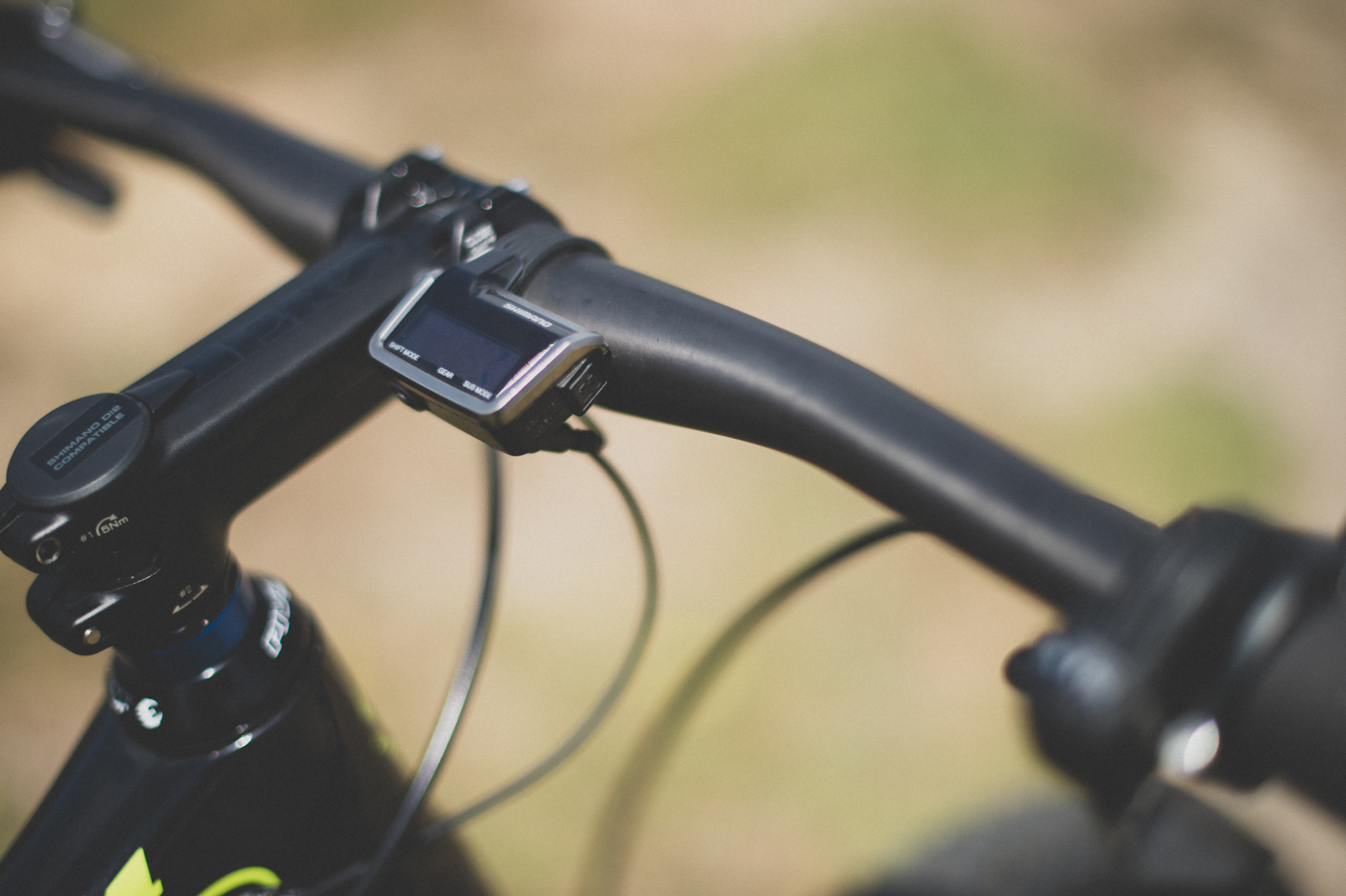
We’ve seen some internet warriors disparaging of the system’s digital display (‘I don’t need a computer to tell me what gear I’m in… etc etc’) but in reality it’s a very neat addition. Aside from current gear information, it also allows you toggle between manual and Syncro Shift modes, plus view battery life, suspension mode and more. We noted that the display unit does sit in a position that should protect it from most crashes too. In the case of our bike, the display was made all the neater with the new Shimano Pro Tharsis bar and Di2 specific stem which neatly hides all the cables. The whole arrangement was so clean and simple, it was weird looking at our bike to start off with, like something was missing!

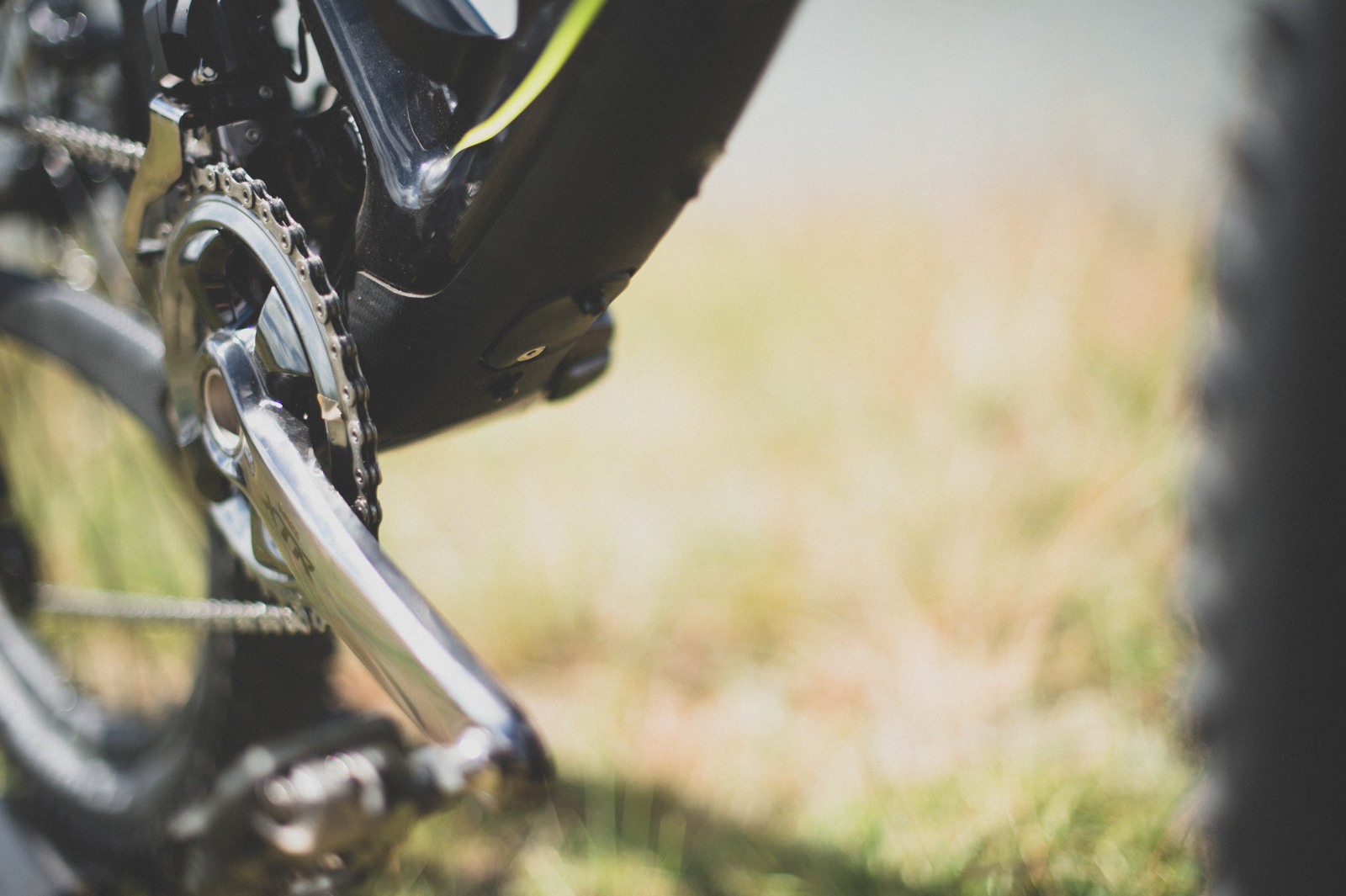
It’s the possibility for clean integration that is another benefit of an electronic system. Because the wires can bend and twist in ways that a shift cable never could, the whole system can virtually disappear into the bike frame. In the case of our test bike, this was taken to a whole new level. The Pivot Mach 4 Carbon is one of the very first bikes to be specifically designed to work with Di2, with a port at the bottom of the down tube to house the battery, and cable routing ports for the thin wires.
Di2 will come OEM on a few bikes soon and how these accommodate the battery and cables will vary as there isn’t a single standard yet. Shimano does however offer a few different configurations including a seat post battery, head tube battery, and external battery housings. Di2 can also be retrofitted but that’s a job best suited for your local bike shop.
Ride time, baby
After school, we got to ride the bikes. Our first spin was in the Cape to Cape’s famous Red Bull Shootout.

Our very first impression was just how much the shifters felt like a mechanical system. Unlike the road variety if Di2 (which we’ve ridden quite a lot), the shift feeling is strong and positive, with a real click. Shimano explained that a soft “electronic” feel wouldn’t work as the rough terrain and aggressive nature of our movement on the handlebars would introduce too many false, or accidental shifts. We loved that feel of a strong, positive shift and immediately it felt “normal”. The shifters also have all the multi-release functions of the mechanical brother (ie. two upshifts at once) but with a little more firepower; hold your thumb down and it will keep on shifting across the whole cassette.
We loved that feel of a strong, positive shift and immediately it felt “normal”

That evening there were a few minor changes we wanted to make to our shifting. We sat down with our friendly Shimano techs and watched as they connected a laptop with the free E-Tube software (PC only at the moment) to our bikes and made a few minor tweaks.
We got to see how adaptable and programmable the whole Di2 system is. From something simple like changing shifting paddle function, to more complicated operations like setting the Syncro Shift programs, it’s all as easy as sitting on a laptop and not a greasy finger was to be seen.
It can shift underwater
The next day saw us entered into Stage 3 of the Cape to Cape race, and the 57km stage from Xanadu Winery to the Colonial Brewery proved to be super fun and a great way to get a feel for the new Di2. With loads of undulating terrain we shifted thousands of times in those couple of hours and we never missed a shift.

The crisp, firm, mechanical feel at the thumb is transferred to a sweet futuristic robot sound as the derailleur executes perfect shift after perfect shift. At no time did the feeling at the thumb ever change. Constant, instant, snappy, and comfortable. It was hard not to fall in love with it.
We also spent some time in the Syncro Shift mode and explored the automated front derailleur shifting. Syncro Shift is designed to give you the benefits of a multi-ring setup, but with only one shifter (ideal for people who want to run a dropper seat post, like us). It did take us a little while to get used to only using the right hand shifter to go up and down all 22 gears. Our brains are so wired against this automation that we were initially hesitant to trust the system but it proved to be more than trustworthy.
At no time did the feeling at the thumb ever change. Constant, instant, snappy, and comfortable. It was hard not to fall in love with it.
The Synro Shift mode is completely programmable and depending on your riding style, preferred cadence, and other factors, you might want to change the shifting points (at what gears you automatically shift from small to big front ring and visa versa). We found it a very interesting experience, and more time on the Di2 will enable us to put it through a longer test. We’re looking forward to getting this bike on home soil, removing the front shifter entirely, fitting a dropper post remote and seeing how Syncro Shift goes in the long term.
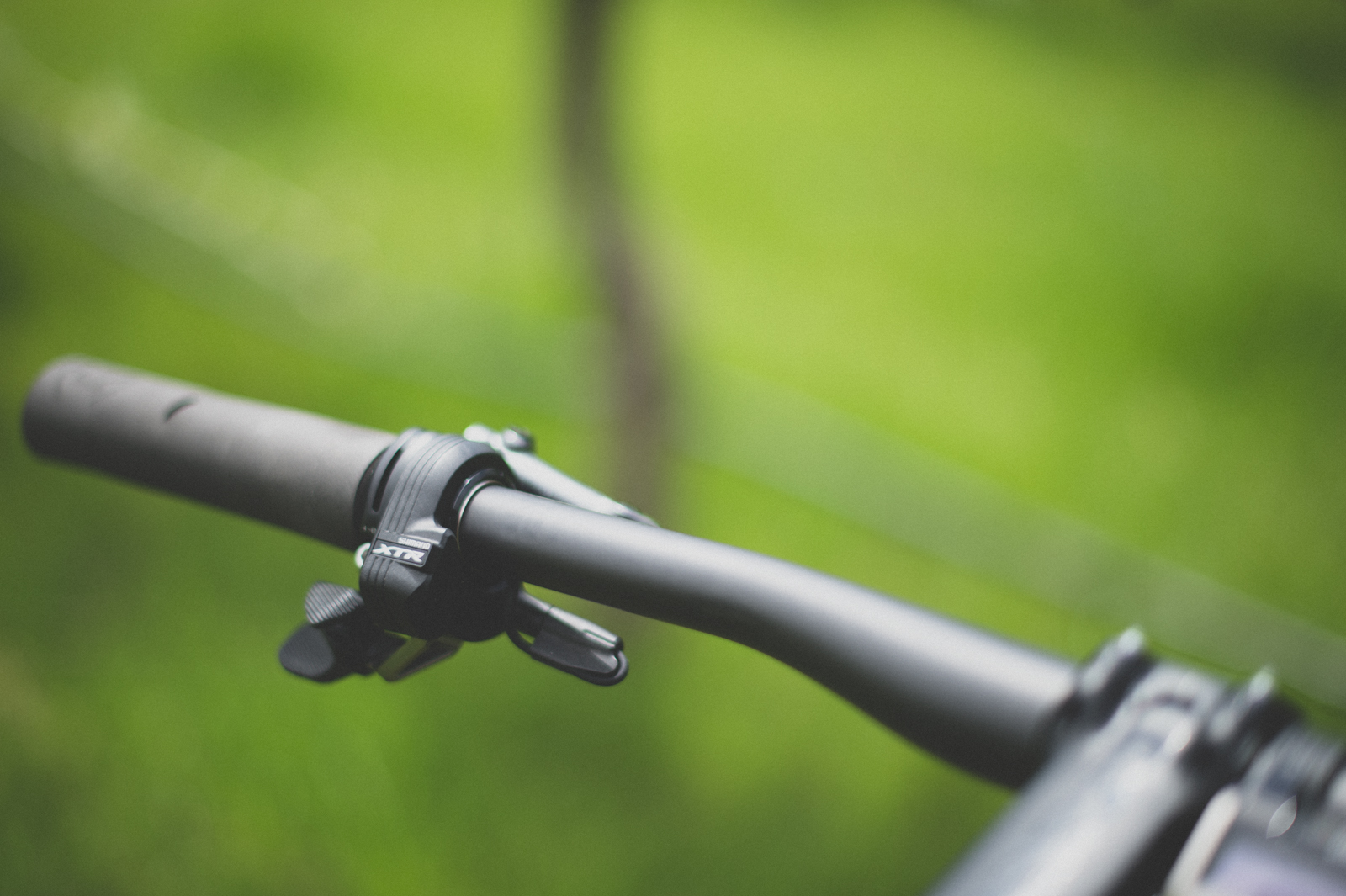
We also had a bit of a fun experiment planned with the new Di2. Electronics and water are times at enemies and we knew that there were a few water crossings along the way. Our plan was some submerged shifting! Even in the deepest-axle-high-rear-derailleur-competely-covered-in-muddy-smelly-water crossings we were still able to shift – literally underwater.
And what about other issues? Shimano have it covered, and probably have an answer for all of your questions. As an example, in order to protect your investment, the system has a safety mode where the rear derailleur can sense an impact and avoid further damaging shifting, such as over-shifting into the spokes. In this safety mode you can then re-adjust the shifting (without getting off your bike, of course) and get it back into tune.
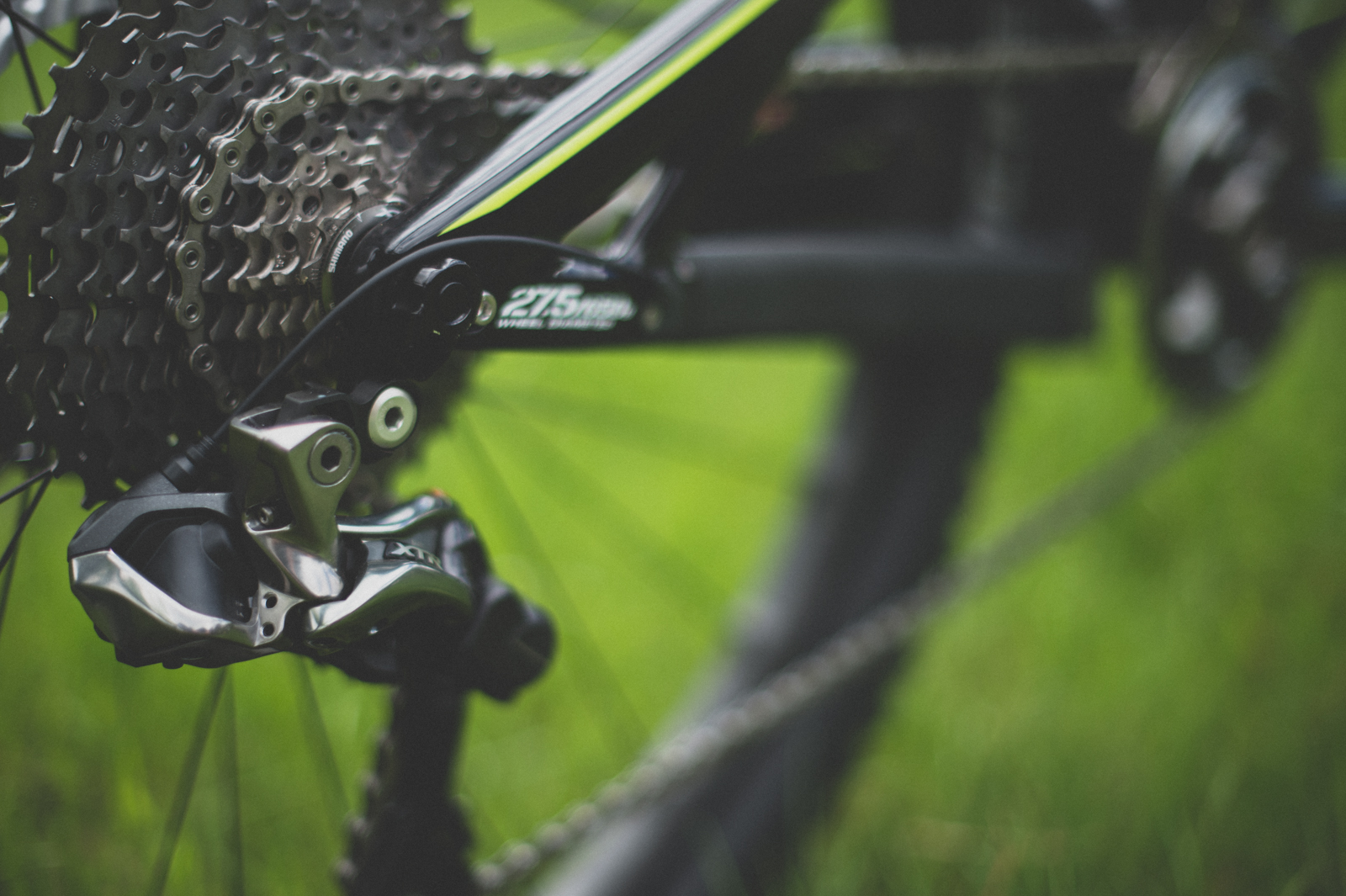
And yes, the battery can go flat, but the system is smart enough to shut down less important functionality first (like the front derailleur) in order to save power. Of course, once you’re done for power you are done for shifting, but with a worst-case scenario range of over 300km, we think you’ll be ok.
At the end of the 57km we were buzzing at how great the event was, and how perfect our first experience on Di2 had been. It shifted perfectly all day, it felt the same at our thumbs from shift number one through to shift one million, it took a dive in some pretty muddy water, and it held off a few sticks and rocks. And it made sweet robot noises, which didn’t lose their novelty!
Our first thoughts
Shimano XTR Di2 is not just an evolution that finally removes a cable system we’ve had for almost 200 years, it’s also a shift (pun intended) in how we think about changing gears. While the system is complex, its effect is to simplify the riding experience, and to open up new possibilities in bike design.
What Shimano may sometimes lack with sexy marketing they more than make up with long lasting, well-built products of consistently excellent quality. And just like in the road world where Di2 has been a game changer, we’re sure the long-term implications for mountain biking will be huge.
The Pivot Mach 4 Carbon test bike with full XTR and Di2 is staying in our test shed for a little longer and over the next little while we’ll be going into more detail about the new technology. Until then here’s some answers to your questions you’ve posted already:
Your first questions from Flow social media:
You: Now if they can make wireless brakes…
Us: http://www.gizmag.com/wireless-braking-for-bicycles/20150/
You: So u have to charge the battery before you canuse your mtb bike? If something breaks thats gonna be expensive to replace ouch. $600 of rear der.
Us: We haven’t been informed of the cost yet but we can pick few more parts for around that cost that are pretty damn easy to break too. Also, we’re all pretty accustomed to charging a phone, so one more battery every few weeks should be ok.
You: too much money we can have fun for far less money.
Us: True. We have actually found a pretty good way to have fun with some stickytape, a hamster, and a dollar coin, so it’s all relative really. We think that the technology is well worth the money and when compared to other expensive upgrades it stacks up well in the cost vs performance ratio.
You: Are you sponsoring me with this bike?
Us: Yes! Can you please send us your resume, with a large sum of money attached.
You: Tough job.
Us: But someone has to do it.
You: Had a squizz at this at the C2C in between beers at the Colonial Brewery. Didn’t know the Flow team was over here this year – enjoy yourselves?
Us: We dad a blast and highly recommend both the race and riding in the area.
You – It would be super nice to take it for a test ride in a place like Oregon.
Us- Yes, yes it would. Can you please purchase the tickets for us? And also make a booking at your most recommend Mexican restaurant too.


